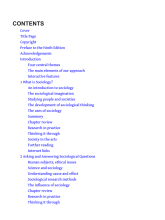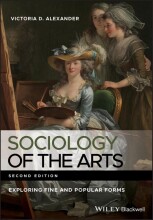Nations and Culture - Lamont (1992)
5 important questions on Nations and Culture - Lamont (1992)
Why is it important that we make cross-national comparisons in Sociology?
- Problem of ethnocentrism.
- National contexts are important, but we often take our own context for granted.
- De-familiarise the familiar.
- So, in order to understand how (our own) national context impacts culture, we have to compare to different contexts.
When we look at national differences in sociology, there are two broad perspectives we can use.
Which two perspectives are we talking about?
- Essentialism.
- An 'essence' of the values and views that are typical for people living in a particular nation.
- Somewhat equivalent to national identity.
- Psychologism.
- Personality traits that are common (or more prevalent) among people living in a particular nation.
- E.g., repressed English, rigid Germans, straightforward Dutch.
- More fragmented:
- National repertoires.
- National habitus.
Can you explain what the term 'national repertoire', coined by Michèle Lamont (1992) means?
- A national repertoire is the distinctive set of values, norms, and cultural scripts that people within a specific nation draw upon to understand and interpret their social reality.
- I.e., nationally shared frameworks inhabitants use to make sense of their lives and evaluate others.
- Social toolkit.
- Such repertoires are not internalised dispositions, but social tools or reference points, used flexibly depending on context (Swidler, Culture in action).
- Although people are flexible in how they use these tools, some possibilities are more likely, because:
- Historical trajectories.
- Institutional structures.
- This leads to a national classification system, or boundary patterns.
- Higher grades + faster learning
- Never study anything twice
- 100% sure, 100% understanding
According to Lamont (1992), national repertoires can differ on boundary patterns.
What are boundary patterns and what do they say about national repertoires?
- Boundary work refers to the ways in which people within a certain country draw boundaries and make distinctions between people.
- E.g., Who are 'worthy' and who are 'unworthy' people, who are your friends, who do you respect, who are your heroes, etc.
- Different kinds of boundaries:
- Moral boundaries.
- Socioeconomic boundaries.
- Cultural boundaries.
In her comparison of national repertoires, Michèle Lamont (1992) gives some explanation as to why people from different countries have other boundary patterns.
Can you explain what these bedrock properties are, and elucidate them by comparing the USA to France?
- Historical trajectories.
- Culture.
- USA: Americanism (pragmatism and populism).
- France: Republicanism (equality, universalism, unity).
- Religion.
- USA: protestantism led to strong moral imperatives and work ethic.
- France: Catholicism gave the idea that material success is not the main goal of life.
- Institutional structures.
- Education.
- USA: localised → fact-based expertise.
- France: centralised → general culture.
- Welfare state (education, media, ...)
- USA: private initiative → stratified.
- France: Large public and nonprofit sector → universal.
- Geographic and social mobility.
- USA: More mobile → more focus on individual trustworthiness.
- France: More hierarchical → more focus on social background.
The question on the page originate from the summary of the following study material:
- A unique study and practice tool
- Never study anything twice again
- Get the grades you hope for
- 100% sure, 100% understanding































